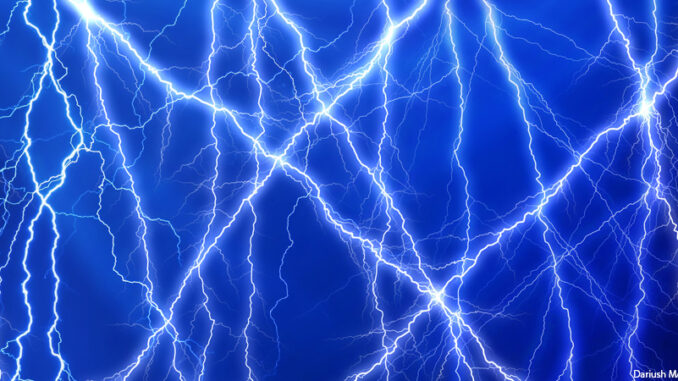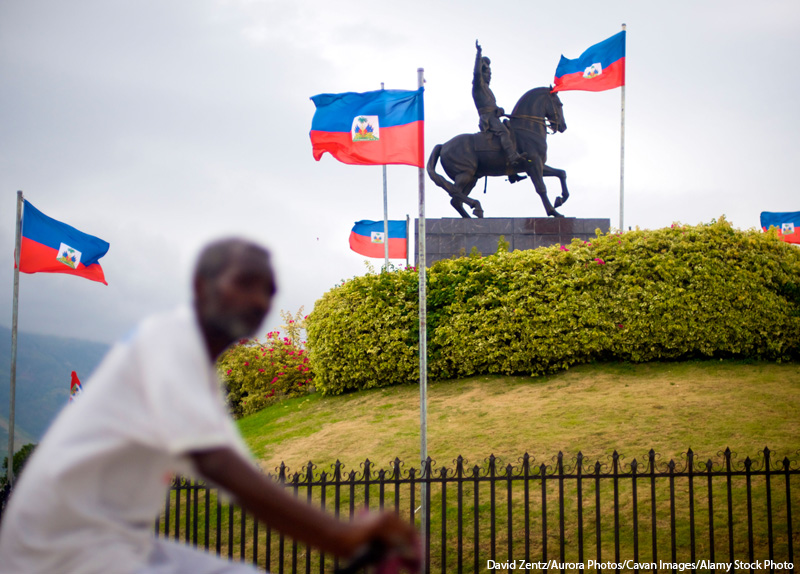
Can a Giant Laser Control the Weather?
Have you ever heard the story of Ben Franklin ”discovering” electricity with a kite and a key in a thunderstorm? Now, scientists in Switzerland are trying something similar (if much more high tech) with a giant laser. A team of researchers led by Swiss physicist Jean-Pierre Wolf has mounted a huge laser on top of a 8,200 feet high mountain. The laser is manufactured by the German TRUMPF company. They are trying to turn it into an enormous lightening rod. Why there? Because that area has one of the highest rates of lightning strikes in all of Europe.
What is the point of the EU Laser Lightning Rod (LLR) experiment? The laser will catch bolts of lightning and direct them safely to the ground, like a typical lightning rod. But scientists hope that it will also cause extra strikes by mimicking the electric process that causes natural lightning. They want to “unload” the cloud and cause fewer strikes in the nearby area. This is important because climate change is causing more and more lightning strikes. Globally, lighting strikes kill 6,000 to 24,000 people every year. There is a financial component, too.In the United States, for example, lightning costs billions of dollars in destruction to air traffic and power lines every year. Lightning also causes worldwide damage to electronics and infrastructure. If the experiment works, similar lasers could be placed at airports and other heavily impacted areas.
The laser is more than 29.5 feet long and weighs about five tons. So exactly how powerful does a laser need to be to control the weather? According to one scientist working on the project, a single pulse is equal to the energy produced by all the nuclear power plants in the world.
Dig Deeper What causes lightning to strike naturally? How does the TRUMPF laser mimic this process?
Germany’s Deadly Flooding
A combination of strong weather events strengthened by o climate change created unusual flooding in Western Europe. Heavy rains led to mudslides, deadly flooding, and widespread damage during the week of July 19th, 2021. So far, more than two hundred people are confirmed dead, including four firefighters. Hundreds more are still missing and not expected to be found alive. Train lines, bridges, and roads have been completely swept away. Germany was the hardest hit. After touring the area, German chancellor Angela Merkel pledged both immediate and medium-term financial support. It’s estimated that more than 300 million euros ($354 million U.S.) will be needed to recover from the damage. Chancellor Merkel also said that more attention will be paid to climate change than has been in recent years. Parts of Germany have not seen this much rainfall in more than a century. In some places, as much as six inches of rain fell in under 24 hours.
Scientists are puzzled by the fact that, though flood alerts were announced about four days before the event, people were not adequately prepared. Also the European disaster plan was focused on larger rivers rather than the smaller tributaries that were hit the hardest. Residents were also confused over what to do when they received the warning. They note that without proper training and preparedness, a four-day warning is no more effective at saving lives than a one-hour warning would be.
Dig Deeper Identify on a map of Germany the areas hardest hit by the flooding. Do you notice any patterns or trends?
New Leadership in Haiti
Haiti has a new prime minister: Ariel Henry. But Henry is inheriting a country full of political turmoil. On July 7, 2021, a squad of gunmen assassinated Haitian President Jovenel Moise. Before his assassination, Moise had chosen Henry as the next prime minister. Meanwhile, a man named Claude Joseph was already serving as interim prime minister. After Moise’s death, a power struggle took place between Henry and Joseph over who was the rightful prime minister. But they have since come to an agreement, and Joseph stepped down.

Henry, 71, is a neurosurgeon who received his education in France and the United States. Later, as interior minister, Henry led Haiti’s response to the deadly cholera epidemic of 2016 that killed 10,000 people. The new prime minister is supported by powerful Western nations such as the United States, Canada, and the European Union. He is generally seen as a unifying force for the country, which is deeply politically divided. Many Haitians have doubts about his ability to bring the country back together. Henry is also tightly linked with the previous administration, which was considered authoritarian and undemocratic. Furthermore, some Haitians worry that he will be overly influenced and controlled by the West.
Henry has promised that his main goal is to form a provisional government until new elections can be held in 120 days. The new elections will be overseen by an election council. In the meantime, Henry has made a plea for unity.
